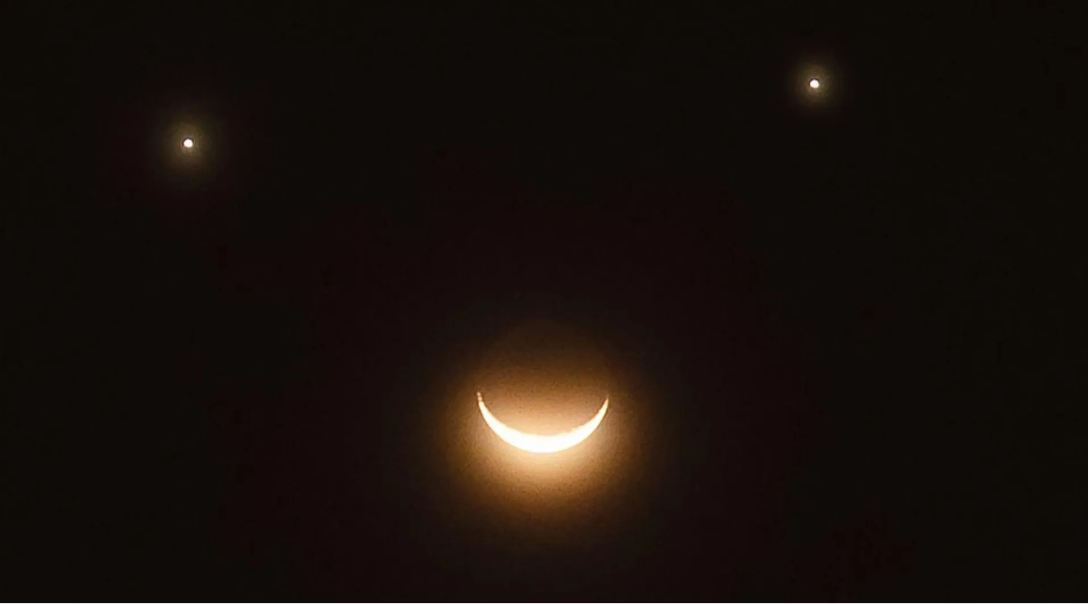The heavens grinned at dawn. In the quiet hours of Friday, April 25, skywatchers around the world lifted their eyes to a rare and charming sight — a cosmic smile stretched across the sky.
This fleeting wonder, known as a “triple conjunction,” came to life as Venus, Saturn, and a delicate crescent moon gathered near the eastern horizon. Together, they painted a joyful face in the firmament, as if the universe itself had paused to share a moment of happiness.
Although the alignment was visible to the naked eye just before sunrise, the report mentioned that stargazers could take in even more delicate details of the celestial display using a backyard telescope or a decent pair of binoculars.
The rare celestial display known as a “triple conjunction” occurs in astronomy when three celestial bodies appear very close together in the night sky. (source: X@LeanneManas)
The rare celestial display known as a “triple conjunction” occurs in astronomy when three celestial bodies appear very close together in the night sky. (source: X@LeanneManas).
According to a Live Science report, this cosmic spectacle occurred due to the close alignment of Venus, Saturn, and a thin crescent moon near the eastern horizon, creating a formation that resembled a smiling face.
Participate in the Festival of Crickit quiz to win a bike, smartwatch & other exciting prizes.
While the alignment was visible to the naked eye just before sunrise, the report noted that stargazers could enjoy finer details with the help of a backyard telescope or a good pair of binoculars.
What is ‘triple conjunction’?
The rare celestial display known as a “triple conjunction” occurs in astronomy when three celestial bodies appear very close together in the night sky. Typically, a conjunction refers to the visual proximity of two or more objects, but when three are involved, it is termed a triple conjunction.
NASA Solar System Ambassador Brenda Culbertson explained the visual arrangement during the event to the Kansas-based TV station KSNT:
“Venus is higher above the eastern horizon with Saturn lower, and a thin, crescent Moon a bit lower and a little farther north,” she said.
Was it visible in India?
The alignment was expected to be visible globally, including in India, provided the weather conditions were clear. However, the window for observing it was brief, according to the Live Science report.
As per BBC magazine, the event would be visible between 05:00 and 05:30 local time from any observation point, low on the eastern horizon.
Formation explained
Venus has been a prominent morning object throughout the week, rising in the east around 5:00 am and visible just before the Sun at approximately 6:00 am.
Each morning leading up to Friday, April 25, Venus rises at the same time and place, while the Moon moves eastward, getting closer to Venus.
The Moon, currently a thin crescent, was a full Moon on April 13 and is now waning toward the new Moon on April 27. According to BBC magazine, by the morning of April 25, Venus and the crescent Moon rose together at around 05:00 BST, with Venus positioned above the Moon.
While this could be observed with the naked eye, caution was needed not to look directly at the Sun, which rose shortly after Venus, the Moon, and Saturn.
BST stands for British Summer Time, which is the daylight saving time in the UK.



